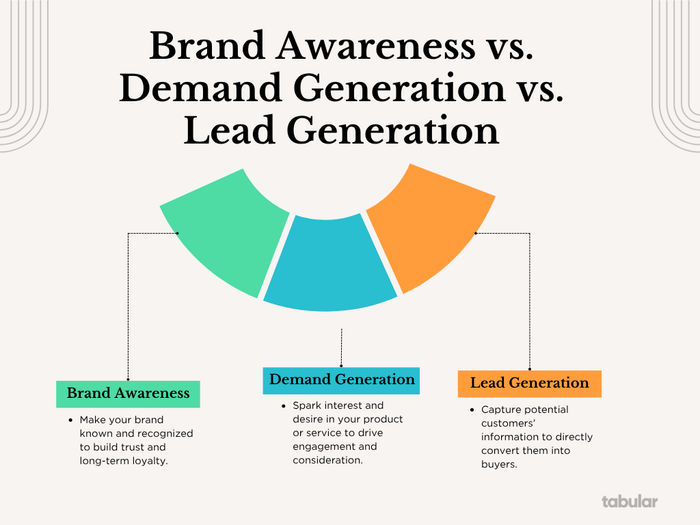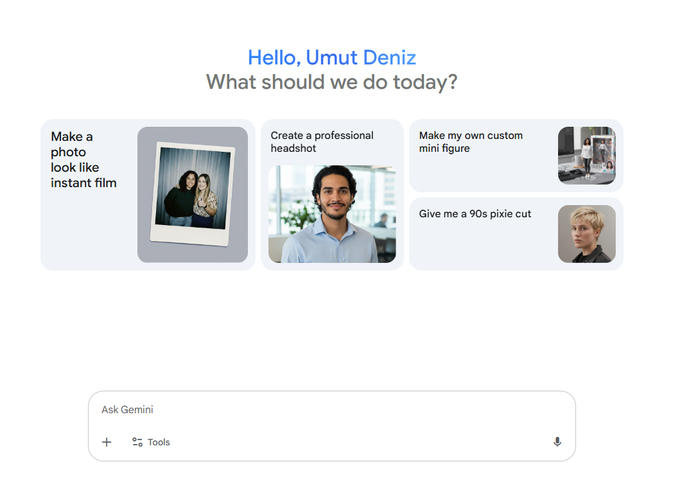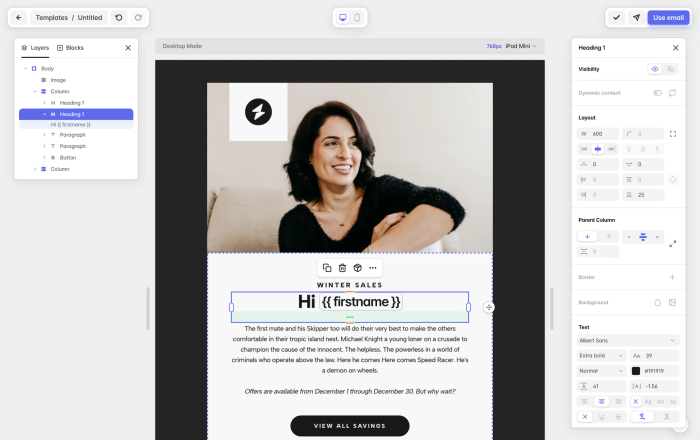Brand Awareness vs. Demand Generation vs. Lead Generation: Understand the Difference with Real-World Examples
Table of contents
- What is Demand Generation?
- What is Brand Awareness?
- What Is the Difference Between Brand Awareness and Demand Generation?
- What Is Lead Generation?
- Brand Awareness vs. Demand Generation vs. Lead Generation Example: Starbucks
- Example of Brand Awareness vs. Demand Generation vs. Lead Generation: Google
- Brand Awareness vs. Demand Generation vs. Lead Generation
- Final Words
Brand awareness and demand generation and lead generation are three terms every marketer is constantly exposed to, but what are they exactly, and what are the differences between brand awareness and demand generation? Is demand generation a part of brand awareness? Where does lead generation stand in this? Well, this article will answer all these questions and give you more insights on how to use them both in your marketing strategy effectively, as they are all key components in the sales funnel.

What is Demand Generation?
Demand generation is a marketing strategy focused on creating awareness and interest in a brand or product to drive potential customers into the sales funnel. It’s all about creating a need or introducing your solution to users in a way that they didn’t know before. Demand generation is a great part of innovation marketing.
What is Brand Awareness?
Brand awareness is all about the identity of your brand and how users perceive it; which emotions and ideas does your brand evoke? It’s more than just promotion.
What Is the Difference Between Brand Awareness and Demand Generation?
I think it would be better to explain with an example. Starbucks is a well-established brand with a huge reach all over the world; their idea of a “third place” between home and work, the way they design their shops and cups, and their environmentalist approach are great examples of brand awareness, while their seasonal drinks like the Pumpkin Spice Latte and limited-edition merchandise collections serve as strong examples of demand generation.
What Is Lead Generation?
But where does lead generation stand? Brand awareness, demand generation, and lead generation are all part of the user’s journey before making a purchase. In this process, lead generation refers to the process of identifying and attracting potential customers (leads) who have shown interest in a product or service, and capturing their contact information or engagement before the actual purchase.
Brand Awareness vs. Demand Generation vs. Lead Generation Example: Starbucks
Let’s continue with the Starbucks example. We said Starbucks’ brand awareness builds familiarity, their demand generation campaigns (like seasonal drinks) create excitement and drive purchases, and the next step in the funnel is lead generation, where Starbucks uses their loyalty app and rewards program to connect with customers who are interested in the service or product and create incentives to drive them toward a purchase decision, like free drinks for Instagram follows.

If we had to summarize the difference between brand awareness, demand generation, and lead generation in one sentence: Brand awareness is about making people know and recognize your brand, demand generation is about creating interest and desire that drives purchases, and lead generation is about capturing potential customers’ information to convert them into buyers.
Example of Brand Awareness vs. Demand Generation vs. Lead Generation: Google
Another great example would be Google's Gemini. To increase brand awareness, Google integrated Gemini into multiple platforms, offered the Gemini API and AI Studio for developers, broadened visibility by replacing Google Assistant and integrating it with native devices like Google Pixels, as well as integrating Gemini into its entire ecosystem, including Google Home Speaker and Nest cameras.

For brand generation, Google published courses and free content to educate users about different use cases of Gemini. You can use a very generous free API quota and see different use cases on the homepage, making it accessible for everyone. Google showed ways for people to use Gemini—this is a great example of demand generation.
For lead generation, Google offered Gemini with its cloud storage plans, Google One, provided a personalized experience for signed-in users, and offered generous free trials so users could experience and engage with the product.
Brand Awareness vs. Demand Generation vs. Lead Generation
Brand Awareness:
- Goal: Make your brand known and recognized.
- Purpose: Shape perceptions, evoke emotions, and build identity.
- Examples: Starbucks’ “third place” concept, logo recognition, environmental campaigns.
- Benefits: Builds familiarity and trust, improves long-term loyalty.
- Considerations: Results are often long-term and hard to measure directly.
Demand Generation:
- Goal: Create interest and desire for your product/service.
- Purpose: Introduce solutions and generate excitement in potential customers.
- Examples: Starbucks seasonal drinks (Pumpkin Spice Latte), limited-edition merchandise.
- Benefits: Drives active engagement and consideration, supports innovative campaigns.
- Considerations: Needs creativity and proper execution to create measurable impact.
Lead Generation:
- Goal: Capture potential customers’ information to convert them into buyers.
- Purpose: Identify and connect with prospects ready to engage or purchase.
- Examples: Starbucks loyalty app, rewards program, email subscriptions.
- Benefits: Enables direct marketing, measurable ROI, drives conversions.
- Considerations: Requires follow-up and nurturing to turn leads into sales.
Final Words
Brand awareness, demand generation, and lead generation each play a distinct but interconnected role in guiding potential customers through the sales funnel. Brand awareness lays the foundation by making your brand recognizable and shaping how people perceive it. Demand generation builds on that foundation by sparking interest and creating desire for your products or services. Finally, lead generation captures engaged prospects’ information to convert interest into actual sales. By understanding and strategically leveraging all three, marketers can create a cohesive strategy that not only builds visibility but also drives engagement and delivers measurable results.
How You Can Use Tabular for Brand Awareness

Use Tabular Email Builder to design visually consistent emails that reinforce your brand identity. Branded templates, colors, and storytelling campaigns help familiarize your audience with your company’s values, logo, and messaging. Newsletters, updates, and thought-leadership content keep your brand top-of-mind.
How You Can Use Tabular for Demand Generation

Tabular makes it easy to create engaging campaigns that spark interest and excitement. Highlight product launches, seasonal promotions, or limited-edition offerings with dynamic visuals, personalized content, and clear calls-to-action to drive engagement.
How You Can Use Tabular for Lead Generation
Integrate Tabular with your email sending platform to provide a more personalized experience for each user, with dynamic content and automated triggers that will help you guide your potential customers through the journey.